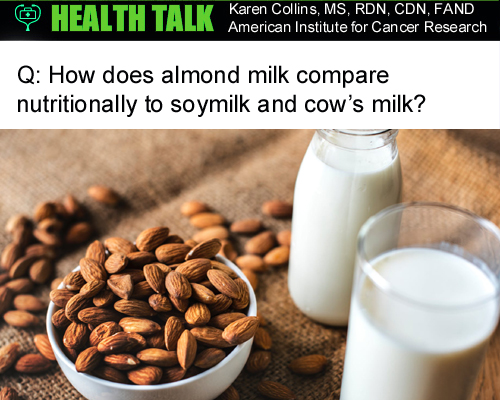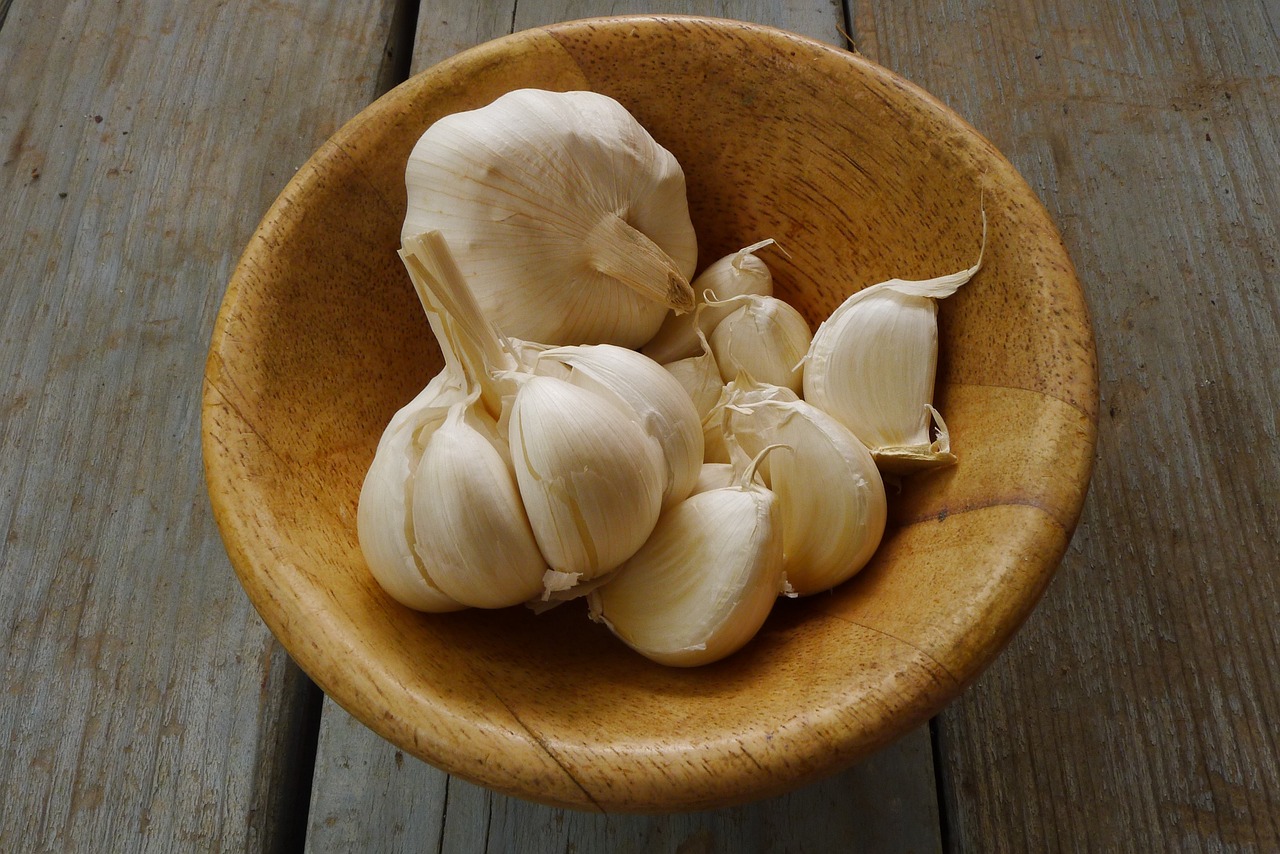Comparing Plant-Based Milks to Cow’s Milk

Q: How does almond milk compare nutritionally to soymilk and cow’s milk?
A: For people avoiding cow’s milk due to allergy, lactose intolerance or other reasons, almond milk and soymilk are two of the most popular choices. Their popularity has led to many different options within each category, so check labels since nutritional content varies substantially. The calcium-fortified versions of soy and almond milk provide calcium amounts similar to cow’s milk (and some may provide fortification beyond the 30% of Daily Value found in cow’s milk). Beyond that, they are quite different nutritionally.
For protein, soymilk is closer to cow’s milk, providing 6 grams (g) in an 8-ounce glass compared to the 8 grams in cow’s milk. Almonds themselves are packed with protein, but almond milk is not, supplying only 1 gram per 8-ounce glass (less than you get in a slice of bread). Calorie content varies substantially. Unsweetened soymilk in regular or “lite” form is similar in calories to either 1% (low-fat) or skim (nonfat) cow’s milk (around 70-100 calories per 8-ounce glass). Unsweetened almond milk contains less than half the calories of soymilk, but sweetened versions (including vanilla) add from 2 to 5 1/2 teaspoons of sugar per cup, adding an additional 30-90 calories
Cow’s milk is highest in potassium, which helps control blood pressure, followed by soymilk; almond milk is much lower. On the other hand, almond milk is lower in sodium and supplies half of the daily recommended amount of vitamin E. For vegans and others who have trouble getting the heart-healthy omega-3 fats, one version of soymilk comes with added DHA, one type of omega-3 fat. Consider what nutrients you are counting on your milk choice to provide, and choose accordingly. Read labels among the specific choices to find what best meets your needs.
The Author:
Karen Collins, MS, RDN, CDN, FAND
American Institute for Cancer Research
The American Institute for Cancer Research (AICR) is the cancer charity that fosters research on the relationship of nutrition, physical activity and weight management to cancer risk, interprets the scientific literature and educates the public about the results. It has contributed over $100 million for innovative research conducted at universities, hospitals and research centers across the country. AICR has published two landmark reports that interpret the accumulated research in the field, and is committed to a process of continuous review. AICR also provides a wide range of educational programs to help millions of Americans learn to make dietary changes for lower cancer risk. Its award-winning New American Plate program is presented in brochures, seminars and on its website, http://www.aicr.org. AICR is a member of the World Cancer Research Fund International.








